The world experiences multiple periods of change and innovation. One universal law regulates everything. Through the anthropological era, there were periods of change that have altered the direction of the globe, shifting the world in a different direction, like the discovery of agriculture. It transformed human beings from hunters and gatherers to those who created cultivators and colonists. Several great civilizations emerged along the shores of major river systems throughout the globe. Take any other example where silicone revolutionized the field of astrophysics and medicine, and steam engines brought into the golden age of manufacturing goods in mass quantities and commerce.
The world is experiencing a period of technological innovation, and AI Development Solutions is in the driving seat. Digitalization has dominated every aspect of personal and business life, from the Internet of Things and Augmented Reality to Generative AI—the protagonist in this tale.
This article helps the reader understand Generative AI in depth, its untapped potential, and ways to use its strengths to succeed in the business world.
Read About: Generative AI: Expectations vs. Reality
What Is Generative AI?
It is a form of AI that focuses on creating computers that produce new data that is realistic and similar to what they've already learned from other instances. Simply put, Generative AI refers to the AI development technology utilized to produce various types of digital media, such as animated, text, media, and even audio. It can quickly create material from multiple inputs. Apart from its speedy reaction times, it's known for its high-quality output. It's a machine learning model trained on massive language models (LLM). Models can be trained using millions of text information, adding more depth to Generative AI. Generative AI.
This tech is helpful when writing codes for product development, creating content, and designing new medicines. Using Generative AI, you can receive text-to-text, text-to-image, video-to-text, or image-to-text output. It can develop human-like outputs and produce fresh data every day.
Also Read: Conversational AI vs Generative AI: Core Difference for CX
How Does Generative AI Work?
Generative AI creates outputs via neural networks, deep-learning algorithms, and machine-learning models. It detects patterns and produces results based on those. Generative models feed vast amounts of data and create videos, text exemptions, etc. When other data is transferred to the models for learning, data patterns can be studied. AI engineers can set up rules and modify the parameters for the output. Following that, the system will produce the results you want. Generative AI runs on different data models like Generative adversarial networks (GANs),variable autoencoders (VAEs),and transformers.
When a model has been built on a particular data set, it will develop new models using samples from the feed data. It can refine and produce new data using a procedure known as an interface. Interface processes alter output to match the expected output or rectify the errors. Users can get better results and more accurately match the expectations of the user.
Must Read: Benefits Of AI That Performing Mundane, and Time-Consuming Tasks
Benefits Of Generative AI
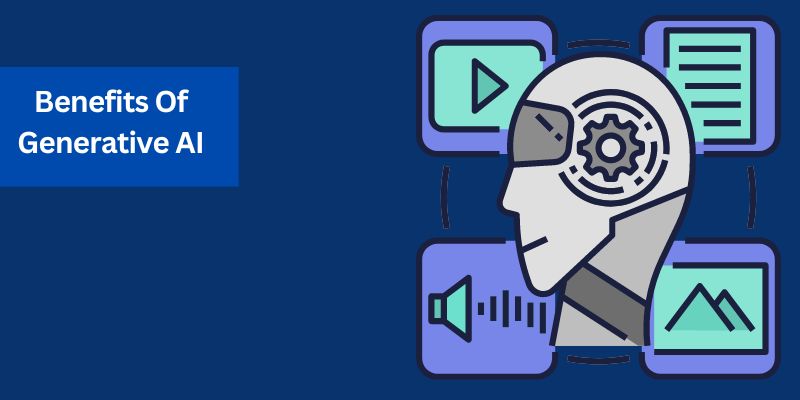
The widespread adoption of Generative AI indicates that it offers many advantages. These are the best pros every client and every business can be able to enjoy:
The Company Automates And Invents The Process Of Creating Content
One of the main applications that businesses can find when using generative AI is in the creation of content. Marketing teams can spend most of their time producing new material in the form of blogging posts, marketing material, social media posts, and graphic designs. AI can assist in the entire process. Generative AI development tools will take your instructions specifically for use in specific situations. For instance, if you're looking to design your landing page, instruct the AI, the text generator, to write an introduction to the page. It identifies your visitor's issues while linking your potential solutions to your Custom AI Software Development.
This feature allows companies to automate content creation and innovate. Try these AI instruments by presenting them with fresh concepts as input. Check out how they consider your suggestions and develop more. It is then possible to debate AI-generated concepts to refine them, ultimately leading to a usable concept.
Improves The Customer Experience By Personalizing It
Another method AI helps improve business efficiency is personalizing the customer experience. AI can learn more about your business and the services you can offer. When you mix this with customer information, you gather to create personalized experiences with generative AI. A typical e-commerce company can access customers' demographics and their likely purchase items. If they match these preferences with potential buyers, they can create personalized content using AI to provide more appropriate recommendations. Ultimately, this results in an enhanced customer experience since the consumer receives the product best suited to their needs.
Optimizes Product Designs
In product design, generative AI could help businesses increase efficiency and creativity. It's often difficult to know what consumers want, as behavior and preferences can change over time, leaving companies to scramble to stay ahead. AI development models employ deep learning methods to detect patterns in the market and analyze market elements, helping companies have more confidence in their choices and reduce risks. Data provides invaluable insight into consumer behavior that you can leverage to develop or enhance new offerings.
When you know where your customers tend to be, and you can identify where they're shifting, apply AI to generate new ideas. Include some of the latest challenges consumers face and their possible solutions. You can also consider adjustments to your product offerings that will be more appealing in the current market conditions.
Increases Security Efforts
Generative AI can play a part in helping companies improve their security efforts. Companies must analyze vast amounts of data to identify security threats, which AI tools can aid. Though it's feasible for human beings to study the flow of information through the computer network, this process requires a significant amount of time, which IT specialists can use for other things. AI aids by reviewing those data in your place and uncovering patterns outside the norm. If something doesn't seem suspicious, AI can inform your team that there is a threat they need to address.
This strategy allows swift detection of threats and the capability to stop malicious attackers before they compromise your systems. Since cyberattacks are beginning to use more AI and machine learning, this method will be essential to keep up with sophisticated attacks that use generative AI to generate new malware and personal Phishing attacks.
Advances Health Care Research
Generative AI can help improve health research by developing new drug concepts requiring significant energy and manual creation time, and in particular, figuring out the proteins that makeup molecules can take much time, often several years. With Google's AlphaFold, however, the process can be completed in just a few seconds. It allows scientists to understand the structure of molecules and the way they interact, helping them develop new drugs and test their effectiveness.
Another way generative AI aids in this process is through the generation of testing data. Before, scientists needed human participants to collect data to conduct tests. However, now AI can create artificial information about patients for research and develop tests beforehand to determine whether a particular drug can be successful before starting tests on humans.
Improves The Business Process
AI can help streamline the business process. When you find areas where you can automate your tasks and then use AI to produce reports, you can reduce your staff's workload and do more work daily. One example is an analysis of the report. Management executives must review reports that contain information on their business and the market. To be able to absorb the information they receive, they must spend lots of time studying reports to understand the whole thing.
One of the most appealing aspects of modern large-scale language models (LLMs) is the ability to analyze the data and draw inferences. Numerous tools permit you to add text files to an AI text generator to create summaries of texts. Some software lets you use PDFs as a chat interface to simplify the summary process.
Improved Customer Service
Responding quickly to customers' issues is a challenge for many clients. There are only so many staff members. Customers might wait all day to talk to an agent since chatbots are now based on generative AI development technology built on business information and can provide personal assistance using AI tools. AI tools can take information from your product and customer information to offer specific support for customers who need assistance. Customers can contact your AI chatbot anytime and receive the assistance they require. If the chatbot can't resolve the issue, the customer is in touch with a human representative--helping reduce the work your team must do.
Foster's Market Innovation
companies looking to build their mark in their sector could use the power of generative AI to assist in this process. Analyzing vast amounts of information generated by these generative AI tools can provide insight into data that humans might find challenging to discover independently. Businesses benefit from this, which implies more market-driven innovation. AI assists companies in finding ways to grow their business in new ways. They can be used to identify new product developments, new service possibilities, market trends that could be a factor, and other valuable information.
In addition to helping businesses gain insights into markets, generative AI helps reduce innovation risks. Without understanding the data, you might not have the complete information necessary to make the most informed decisions. The data you gather via AI analysis can reduce the risks when creating products as you will know better what consumers want. It will give you a clearer idea of whether your concept is likely to be a hit with your intended customers, giving your company a competitive edge.
Drives Digital Transformation
Generative AI is a powerful tool for driving technological innovation in the business sector due to the volume of information it provides businesses, which can help managers make better decisions. In the case of construction, for instance, a company might not be enthusiastic about investing in tech. They spend much time in the field, rarely using the latest technology.
However, things change when they begin using machine-learning AI algorithms to study their equipment and inform the machine when something could go wrong or not go as planned. Artificial Intelligence provides the ability to predict maintenance, enabling companies to keep ahead of the curve. It also ensures equipment is repaired before anything goes wrong, giving businesses a reason to invest in digital change.
It Inspires Creativity
It is challenging to think of innovative concepts. Numerous products and works of art supply everything needed for people to survive and flourish in the world. That doesn't mean there's nothing new to think about--and this is where AI generative can aid. Generative AI could help users generate new ideas. Take AI chatbots, for instance. Users of AI chatbots can converse with these machines using natural language and get suggestions they could apply to their creativity.
A product designer could provide an idea of the problems they face for a chatbot and have it develop an inventory of possible solutions to those problems. It's also possible to do it using art. Give an AI artist a concept to consider, and it will generate a new picture. This might not be what you're looking for, but it will give you an idea to consider different ideas.
Read Also: 25+ AI Business Ideas to Consider in 2024
Exploring Generative AI Applications
Generative AI tools for development are set to be the driving force behind the next wave of applications that will change how we work with content development and visual arts, programming, and other design-based and engineering-related tasks. A few of the major sectors in which the generative AI can be utilized include:
Photos
Thanks to artificial intelligence, your photographs will appear like they were taken from a movie because the AI algorithms can be used to recognize and eliminate any confusing, unclear images with visual components. Generative AI: people can convert text into images and create realistic images by analyzing a setting or image, subject design, or location they want to indicate. With Generative AI, you can bring AI imagination to business and transform images that are low resolution to high-resolution works of art that appear sophisticated and stylish.
Video
Every filmmaker has a unique idea of the end product when creating a film. However, thanks to the help of generative AI development technology, that vision is now brought to life in previously unattainable ways. Whether it's adding striking flair or improving the inherent beauty of an image, AI helps filmmakers reach their vision of art in a way that was never before possible.
Code
Discover the full potential of generative AI development technology and improve your programming abilities. You can build programs to address particular application fields of interest through AI, helping you create quality code tailored to your business's requirements.
Audio
Discover the future of AI-powered music and audio technology using Generative AI. It helps translate texts into speech with astonishing ease and naturalness. When you create an audiobook, podcast, or audio-based content, generative AI tools can transform your content with a style that engages your listeners.
Read About: Artificial Intelligence Development: A Comprehensive Guide
Generative AI Development Process 2024
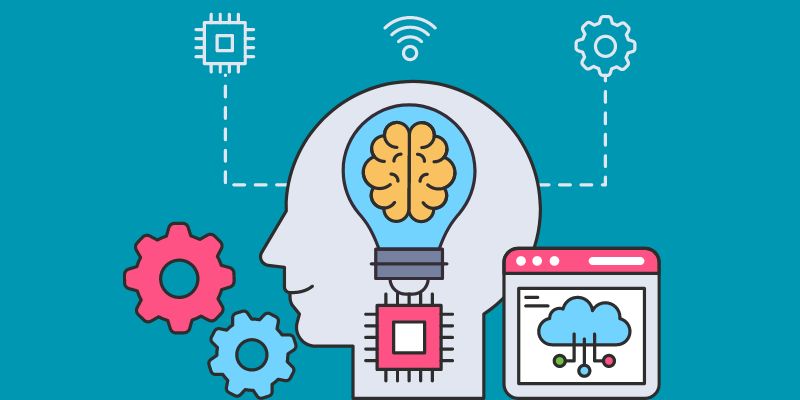
Making a Generative AI development model involves a planned journey, and this process will walk the AI Development Company through the entire procedure for creating a generative AI model.
Model Selection
When selecting models, consider what you'll do if you switch options later. LLMs are constantly improving, and you do not want to commit to models that could be ineffective or outdated within the next few years. To avoid this problem, you should consider picking at least two models from various manufacturers.
It is also essential to think about the cost per inference. If you opt for an inference model that is available as a service, you'll be charged per inference and less when experiencing low traffic. Suppose you opt to use an option that is based on the platform. In that case, you'll pay a fixed annual fee for the VM you set up to manage the load, typically several thousand dollars, given that models that generate data require massive VMs. It is equipped with a lot of RAM, 10s or even hundreds of CPUs with, at minimum, a single-digit amount of GPUs.
Prompt Engineering
Rapid engineering is the most efficient and fastest method of modifying LLMs. It is a bit like an opera by Mozart in that it's straightforward but requires expertise and skill to execute effectively. Many books have been written on prompt engineering. An internet search of prompt engineering returned more than 300 million hits. Instead of attempting to boil the ocean, let's focus on some of the most effective rapid engineering strategies.
Strategies for getting excellent outcomes from powerful AI prompts comprise a variety of apparent suggestions. For example, "write clear instructions" is the most popular OpenAI engineering recommendation. Some of the more specific methods aren't always as evident, but for various reasons, including the fact that it's easy to overlook that superficially human-like chatbots are computers running models and cannot read your thoughts.
Hyperparameter Tuning
LLMs typically have hyperparameters you can set within the request. Tuning parameters is as much an option for LLM prompts as when you train machine models for learning. The most important parameters used for LLM prompts include:
-
Temperature
-
The window for context
-
The maximum number of tokens
-
The end sequence
-
They can be different from one model to the next
The temperature determines the frequency of the result. Based on the particular design, temperature may be anywhere from 0-1 or 0 to 2. More extreme temperatures require greater randomness. In specific models, zero signifies "set the temperature automatically." For other models, zero means "no randomness." The context window determines the quantity of previous tokens (words and sub-words) the model will consider for its response. The number of tokens that can be used limits the length of the output response. Stop sequences eliminate the offensive or insensitive content included in the output.
Generation Augmented By retrieval
RAG, also known as Retrieval-augmented Generation, aids in grounding LLMs using specific sources. Sources are usually used outside the initial training. It's not difficult to guess that the three stages of RAG include retrieving a particular source, augmenting the prompt based on contextual information from the source, and generating based on the augmented model and the prompt.
RAG processes often employ embedding to reduce their length and increase the accuracy of the information returned in context. The basic idea behind embedding is that it uses a phrase or word and converts it into floating-point numbers. These numbers are usually kept in a database that supports a vector search index. The retrieval process then employs an algorithm for semantic similarity, generally using the cosine of the embedding angle in which the query is embedded. The vectors are stored to discover "nearby" information to enhance the prompt.
Agents
Agents, also known as Conversational Retrieval Agents, build upon the concept of conversational LLMs by combining devices, running code, embeddings, and vector stores. Agents are often used to tailor LLMs in specific fields and customize their outcomes. Azure Copilots typically are agents. Google and Amazon use the word "agents."
Must Read: Design Tools with Artificial Intelligence Development: Evolution
Generative AI Development Best Practices
In the process of developing intelligent AI development solutions, it is essential that you follow the best practices to ensure effective and efficient creation. These are the most important guidelines:
Gather High-Quality Data
The accuracy of input data directly impacts the results of Generative AI Development Services. It's crucial to ensure that the information you collect is entirely free of mistakes, biases, and inconsistencies and well-structured and relevant. If you provide your AI models with accurate information, they will be able to create more reliable and precise outputs, making your system more efficient and reliable.
Ensure Security And Privacy
It involves taking crucial steps to secure sensitive information and ensure the privacy of individuals. Implementing robust encryption techniques to access control systems guards against unauthorized access to data and breaches.
Utilization Of Appropriate Algorithms
One of the most essential elements of creating an intelligent AI development system is choosing the appropriate algorithm/model. Selecting the correct algorithm or model ensures that the AI systems are generative, efficient, and provide top-quality outputs.
Stay Up to Date With New Advancements
Keeping up-to-date with recent technological advancements, tools, algorithms, models, and much more can help increase the impact of artificial intelligence in business. While also ensuring that the solutions have modern capabilities. They are efficient and effective.
Train And Tune Your AI Model
To help your AI model function at its peak, you must modify its learning rate, batch size, and number of epochs. This allows the AI to complete its task with greater precision and efficiency. This fine-tuning will also guarantee that the AI model is generative. An AI model produces quality and precise outcomes for your specific job or task.
Also Read: The Guide to Understanding and Using AI Models - 2024
Understanding The Limitations Of Generative AI
One of every person's main worries is, "Will ChatGPT take over my job?" We can safely assume these fears are unjustified since Generative AI has no sense. Yet, sensible devices are the future of technology. With all the excitement, it is crucial to discern between this breakthrough technology's hype and real-world application. From a realistic viewpoint, we must be aware of the shortcomings of Generative AI.
-
Generative AI cannot comprehend the context and produce incorrect or illogical responses to natural language processes.
-
Though it mimics creative style, Generative AI lacks true imagination, innovative thinking, or emotional profundity. It is dependent on data and patterns instead of natural creativity.
-
Generative AI is known to have a problem called hallucinations. AI hallucinations can produce false information depending on the AI's perception of a situation or a contextual context.
-
Generative AI models may inadvertently reinforce the biases present in their data for training and produce bias-driven outputs that reflect societal attitudes.
Read Also: How Will Artificial Intelligence Affect Customer Experience by 2024?
The Future Of Generative AI
The journey of Generative AI isn't ending as it continues to learn and grow. Future developments in Generative AI hold remarkable promise for changing how we work with technology and tackle complex issues. It is essential to find a way to balance using its capabilities while solving the challenges it poses. We are convinced that Generative AI will impact the three main areas mentioned to come.
Frequent Content Creation At Speed
Although generative AI may not be able to realize true creativity, it can simultaneously produce multiple types of content on a variety of subjects at a rapid pace and with a high degree of scale. It can be used across sectors, functions, and even personas to help drive corporate goals.
Natural And Intuitive Conversations
Chatbots and virtual assistants will increasingly become capable of handling more complicated inquiries, providing personalized recommendations, and engaging in emotionally informed dialogues. They'll play a significant part in customer care, healthcare, and education.
Personalization At Scale
Generative AI will enable hyper-personalization across industries, from marketing to healthcare. AI algorithms will analyze vast data to provide personalized experiences and suggestions. Content, campaigns, and product recommendations are expected to become standard, increasing the user's satisfaction and involvement.
Conclusion
Generative AI is a standout source of innovation and creativity. Its ability to create natural language-based text, video, images, and more has pushed beyond the limits of conventional AI tasks and opened doors to exciting possibilities in all fields and industries. Through this overview of Generative AI, we've uncovered its mathematical basis, the significance of transformers, and the importance of prompt development. We've also examined the many Generative AI model varieties and the importance of foundation models.
Generative AI's power extends to communication, art-solving, entertainment, and problem-solving. It's an ode to the human mind's ingenuity harnessed by artificial intelligence. In a time when AI has become increasingly integrated into the daily routine, Generative AI reminds us of the limitless possibilities for collaboration between humans and machines. Generative AI empowers us to imagine, design, and invent to levels we've never imagined feasible while also challenging our minds to push the limits of what AI can accomplish.
While we explore the possibilities of Generative AI and its applications, we set off on an adventure of exploration, creativity, and imagination. This trip promises to define the future and raise human-machine cooperation to new heights.




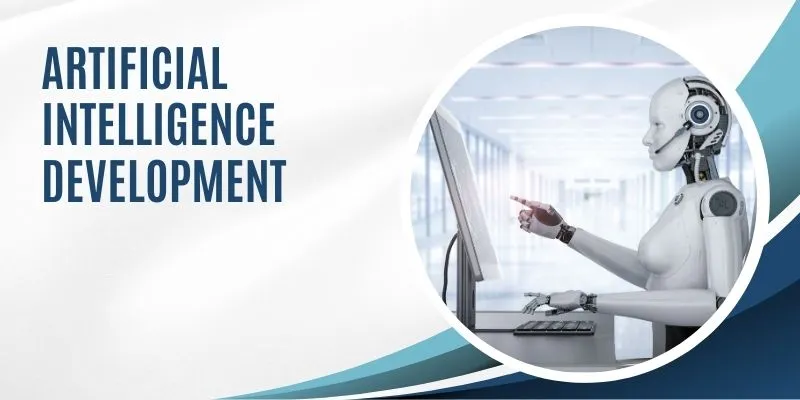
.webp)

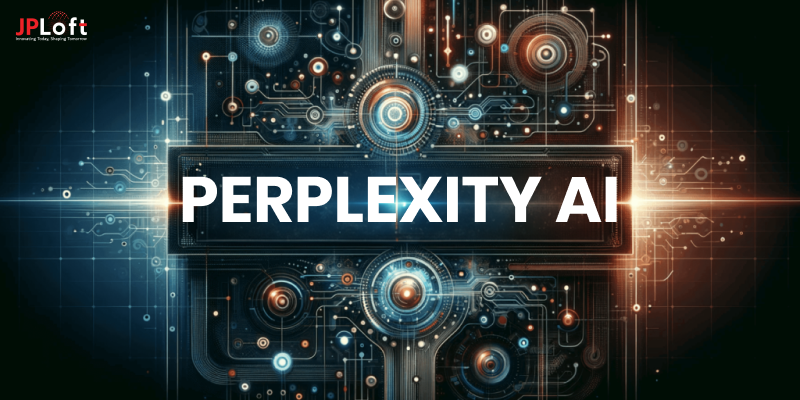
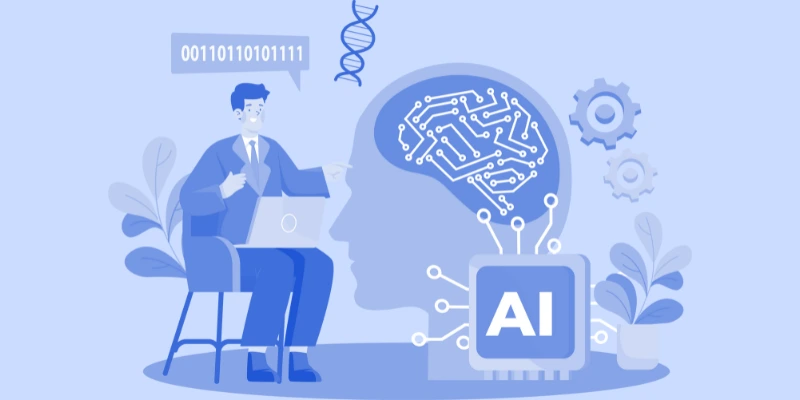




Share this blog